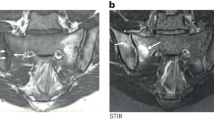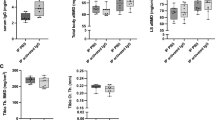Abstract
The antigenic phenotype, ultrastructure and bone resorbing ability of mononuclear and multinucleated giant cells of four giant cell tumour of tendon sheath (GCTTS) lesions was assessed. Both the giant cells and the mononuclear cells exhibited the antigenic phenotype of cells of the monocyte/macrophage lineage. The giant cells, unlike osteoclasts, did not respond morphologically to calcitonin and showed ultrastructural and immunophenotypic features of macrophage polykaryons. However, like osteoclasts, the giant cells showed direct evidence of resorption pit formation on bone slices. This indicates that the GCTTS is composed of cells of histiocytic differentiation with the giant and mononuclear cell components expressing a similar antigenic phenotype. Bone resorption by macrophage polykaryons shows that this is not a unique defining characteristic of osteoclasts. Qualitative differences in the degree and pattern of bone resorption by macrophage polykaryons distinguish it from that of osteoclasts and may underlie the clinical behaviour of osteolytic lesions.
This is a preview of subscription content, access via your institution
Access options
Subscribe to this journal
Receive 24 print issues and online access
$259.00 per year
only $10.79 per issue
Buy this article
- Purchase on Springer Link
- Instant access to full article PDF
Prices may be subject to local taxes which are calculated during checkout
Similar content being viewed by others
Author information
Authors and Affiliations
Rights and permissions
About this article
Cite this article
Athanasou, N., Quinn, J., Ferguson, D. et al. Bone resorption by macrophage polykaryons of giant cell tumour of tendon sheath. Br J Cancer 63, 527–533 (1991). https://doi.org/10.1038/bjc.1991.125
Issue Date:
DOI: https://doi.org/10.1038/bjc.1991.125
This article is cited by
-
Osteoclast-like cells in soft tissue leiomyosarcomas
Virchows Archiv (2010)
-
Stimulation of osteoclast formation by inflammatory synovial fluid
Virchows Archiv (2006)
-
Expression of Cysteine Proteinases Cathepsins B and K and of Cysteine Proteinase Inhibitor Cystatin C in Giant Cell Tumor of Tendon Sheath
Modern Pathology (2001)



